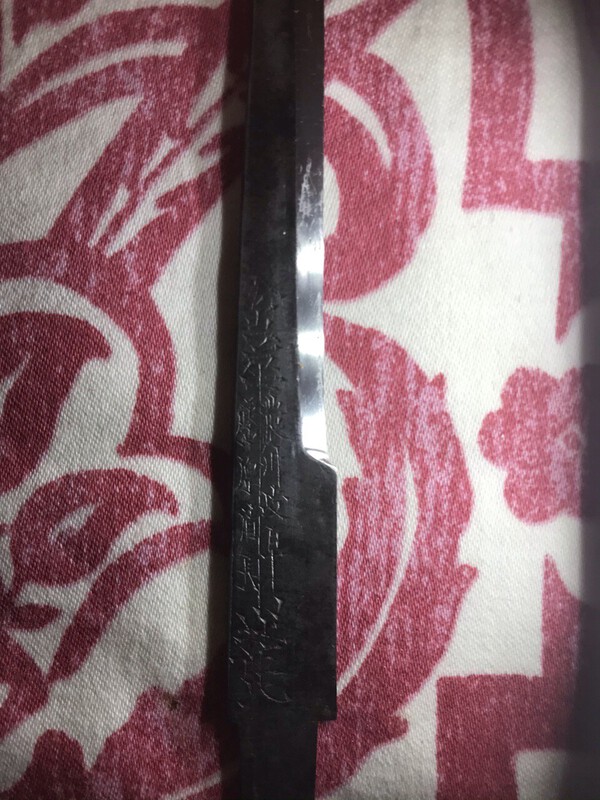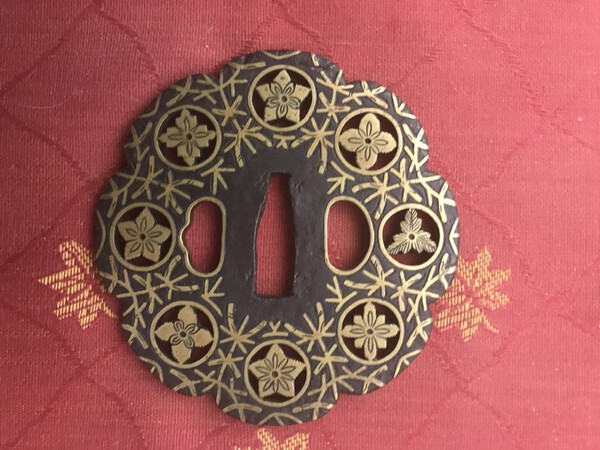-
Posts
8,632 -
Joined
-
Last visited
-
Days Won
51
Content Type
Profiles
Forums
Events
Store
Downloads
Gallery
Everything posted by Jean
-
Agreed with Brian at 100%
-
https://www.aoijapan.com/koshirae-hijikata-toshizos-shinsen-gumi-koshirae/ this fine Koshirae will never achieve Juyo but due to History its price is far above a classical tanto koshirae Juyo.
-
-
Just FYI, shakudo Soten are not necessarily papered by NBTHK. I have seen a shakudo daisho soten tsuba, sold by Bob Benson and bought by a friend, sent to Japan for papering. It was pink slipped by NBTHK but papered by NTHK....
-
Kane Mitsu saku Seki stamp
-

Tamba no kami Yoshimichi, 1700.
Jean replied to Jewels029's topic in General Nihonto Related Discussion
Corrected🙂 -

For Sale : Juyo Ryokai with its papered handachi koshirae
Jean replied to Jean's topic in For Sale or Trade
First and last drop of price, you will never find a juyo Rai school daito at this price with a papered Koshirae: 20 000€ -
In fact, concerning sue Bizen Kazu Uchi Mono, they are forged in Bizen style, pure masame is not sue Bizen style. From time to time, they are for sale on Aoi Art website, check the description, generally the hada is a mix of mokume and itame. Masame hada is very difficult to forge. Very good masame (no flaws) hada is very expensive and sought after. Due to the fact that all layers are folded in the same direction they are very difficult to solder, thus some collectors consider that longitudinal opening in this case are inherent to masame and not considered as kizu. The longer the blade the harder good masame is difficult to obtain.
-
These are not Daisho but here are 3 kogatana, I collect. They are very rare. They were made by Mino smiths specialized in kogatana forging around 1680
-
Roger, you are going to be very disappointed. Kozuka/kogatana appeared at the very end of Nambokucho and became more common in Muromachi with the rise of daisho. You won’t find them easily. There is a Japanese book on kogatana which should fill you with happiness😀
-
Talking about Kitchen knives... Unbelievable, I bought a utility knife forged by Taro Asano two years ago. Once in France, it went through French EMS customs. It was catagorised as a dangerous item, needing a Forwarding agent to take it from customs. I told them I had already received more than ten katanas which all went through their Customs Service and were directly delivered at home. They told me it was impossible, I must have mistaken (I had in my hands their last invoice😂). Of course, no forwarding agent was willing to proceed with customs for a 12cm kitchen knife. I was very polite with them and tell them to send it back to the sender. They did it!!!. I had to send an e-mail to Taro san to send it back upon receiving it but instead of labelling it Kitchen Knife, I told him to name it on the Proforma invoice : Vegetable peeler. It went through French EMS Customs without any fuss....
- 28 replies
-
- 11
-

-

-

-

-
Fantastic hada....
-
Yes, SadaHisa saku
-
« Did any Mino/Seki lineage smiths forge Sanbon-Sugi in other provinces? » certainly Piers, there is no reason why they should not exist. The Diaspora of Mino smiths in Momoyama/early Edo was such that some must have brought sanbonsugi along in their luggages
-
Yes Babu, when you send a package it is weighted at the post office, mainly for the stamp duties. If it is sent abroad you have a specific form to fill in and the weight is written on it. But in fact who cares, a lot of packages are stolen each year... the way packages are handled by postmen makes me vomit... late example: my wife was expecting a package yesterday and using the tracking system this morning it was written that it has been handed over to our concierge who accepted to take it on our behalf. Perfect, the only problem is that we have no more Concierge. Our is badly ill and out of work, he did not see any postman yesterday. So where is this package...
-

I am looking for a translator for Sayagaki and Kanteisho
Jean replied to Brano's topic in Translation Assistance
Tametsugu. He is said to have been the son of Go Yoshihiro and a student of Norishige. He moved to Mino before beginning of Muromachi. He worked in the Soshu style. Why Tametsugu and not Norishige? Because the work is very good but a bit weak to be Norishige so one degree under Norishige is Tametsugu. The O kissaki enables to pinpoint the date of the blade to a period between 1350 to 1365. Juyo Zufu translation of my former Juyo Tametsugu -
Genuine one but RIP, it is a skeletton
-
JP, I wish it could be « SAKE Choji »...🤣😂
-

2020 Shinsakuto Competition Results?
Jean replied to piryohae3's topic in General Nihonto Related Discussion
-
A sword of each Goban Kaji 😀
-
I read Munemitsu










